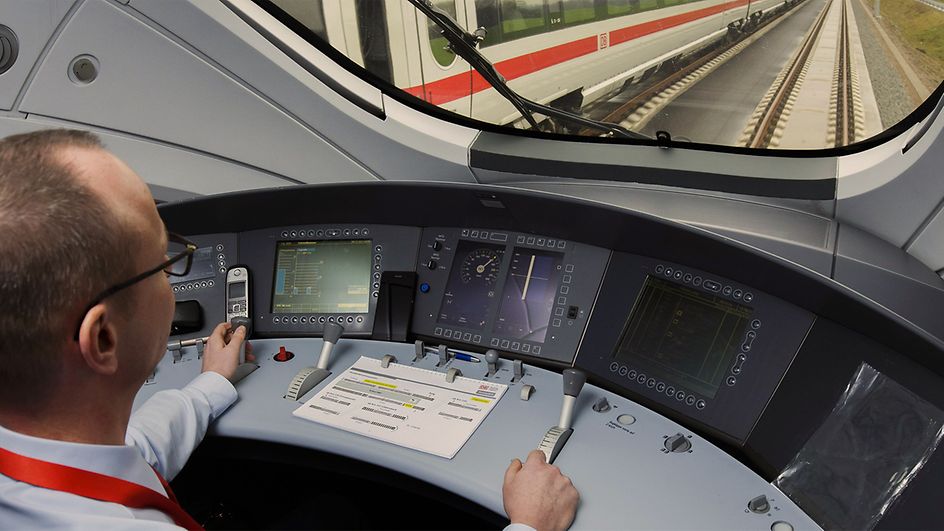Automated processing of objections to construction
Article: Engineering expertise with AI integration
06/2020 – When Deutsche Bahn is planning a construction project, concerned members of the public can submit their objections to the project in writing.
With projects that include tracks, railway stations and other buildings, Deutsche Bahn is one of the biggest construction project clients in Germany. Given the large number of construction projects undertaken, potential misgivings on the part of local residents and public agencies are also taken into consideration. In the course of the construction projects, members of the public and public agencies submit their written objections to the authority responsible, which can be a district government or, in the case of larger projects, a state government. “Depending on the size of the project, there may be a few hundred objections – or a few thousand, each several pages long,” says Annette Mettendorf, who is working in the SmartData team at DB Systel on a software solution designed to optimise objection processes in the planning approval process.
"Processing the letters has so far been a time-consuming process that ties up a lot of resources and requires a sophisticated human system."

Currently, the processes are barely digital and highly qualified staff have to lay the groundwork first: preparing the data, copying addresses and classifying and categorising the arguments and issues raised. Only then can the experts begin to respond to the arguments. The objections submitted typically have post-its and handwritten notes strewn all over them. In the case of larger construction projects in particular, the complaints are similar. Nevertheless, each letter is afforded the same amount of courtesy and receives a high-quality personal response. “Processing the letters has so far been a time-consuming process that ties up a lot of resources and requires a sophisticated human system,” says Annette Mettendorf.
Many objections with identical content can be processed using a similar approach and the software solution developed by the SmartData team takes advantage of this. “A single complaint can have different aspects,” explains Andreas Brückner, a technical engineer and consultant at DB Systel. “The purpose of an artificial intelligence solution is to recognise and sort the relevant passages automatically.” First, text recognition is employed, which allows the content to be processed digitally without having to type it out first. And that’s not all: Text mining and text analysis also enable the system to understand the content. The system creates a clear inventory of the objections, groups similar documents together and categorises the issues raised. The names and addresses of those submitting the objections are also recorded. The software then passes the prepared topics to assessors and experts, who address the specific points raised.
"The AI software first has to learn what the individual passages in the letters mean."

The AI software processes each individual point separately and suggests responses if concrete answers to the questions already exist. This allows the experts and assessors to concentrate on their specialist tasks. “At first, the recognition rate is low, but the software continues to improve over time,” says Andreas Brückner. At first, only a few standardised text components are available to the system. “The AI software first has to learn what the individual passages in the letters mean.” What is clear to an expert at first glance must be taught to a machine, for example, the distinction between greetings and specific objections. To enable the machine to learn these things, experts need to be involved early on in the development process.
Even in the future, artificial intelligence will remain a silent helper that merely takes on tedious tasks but neither makes decisions nor communicates with members of the public. “This is not about replacing staff,” says Annette Mettendorf. “On the contrary, we want to relieve the burden on our experts at work.”
Open to partners
The planning approval process also involves many vendors and software service providers. The system is therefore addressed via an API, which allows business units within the Group as well as others to communicate with the service, and with the same security characteristics. The security of the right of publicity and of the corresponding data is safeguarded in the software solution. “We have created an architecture that ensures that personal data is protected according to established regulations,” says Annette Mettendorf. “For each project, there is a workspace that is protected against access from outside and can only be accessed by a defined group of employees. As was previously the case.”
In the current test phase, the software solution is already able to recognise texts and duplicates reliably. At the end of the second quarter of 2020, the solution will be used in a construction project for the first time in collaboration with a pilot customer. In the meantime, not only will the technology be operational, but a completely new user interface will be developed to enable the pilot customer to work with it. Further expansion stages have already been entered in the road map. “We will make the objection management product available via API management but also via the digital portal for the various business units,” says Andreas Brückner. In addition, individual components of the service will also be available by the end of the year, for example, duplicate detection. One thing is sure: There won’t be any objections to this plan.
Would you like to learn more about objection management? DB employees can find further information on our SmartData page on DB Planet (German only). Alternatively, you can contact smartdata.support@deutschebahn.co


